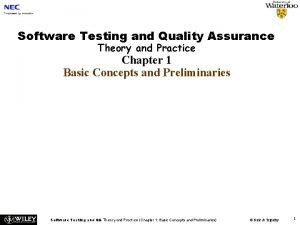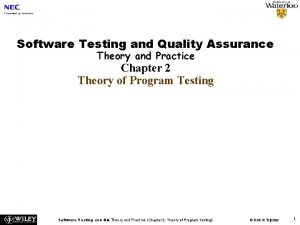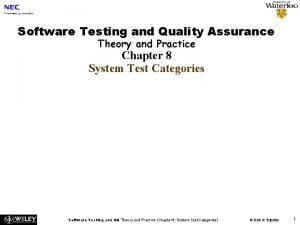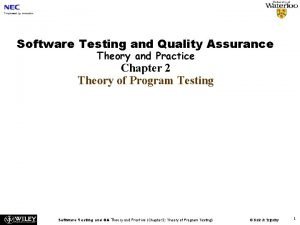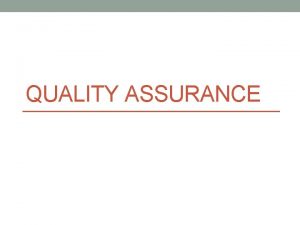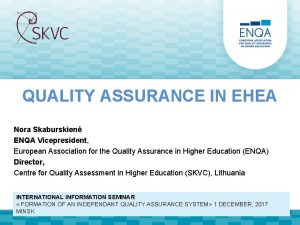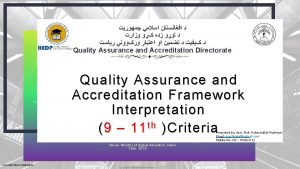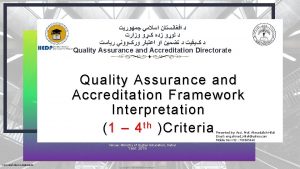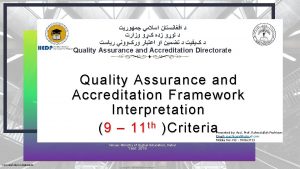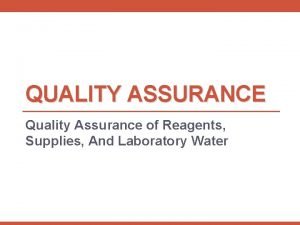Quality assurance and quality culture in the EHEA











- Slides: 11


Quality assurance and quality culture in the EHEA Anna Gover European University Association 5 October 2017 HERE study visit University of Edinburgh, Scotland

European quality assurance framework • • • QA: one action line in the Bologna Process 2003: Berlin Communiqué 2005: Standards and Guidelines for Quality Assurance in the EHEA (ESG) 2008: European Quality Assurance Register for Higher Education (EQAR) 2015: ESG 2015 adopted at Ministerial Conference in Yerevan in May

Principles for quality assurance in the EHEA • • HEIs have primary responsibility for the quality of their provision and its assurance QA responds to the diversity of HE systems, institutions, programmes and students QA supports the development of a quality culture QA involves takes into account the needs and expectations of students, all other stakeholders and society

External QA - State of play • Different system level approaches Trend towards institutional approach, but often combined with programme level Accreditation, evaluation or audit Aligned with the ESG, but national criteria on top • • • Level of institutional autonomy in creating internal QA systems varies Countries (and institutions) are in different phases in implementing QA systems QA identified by HEIs as being among the most influential national reforms (Trends 2010 and 2015)

Internal QA - State of play EUA Trends 2015, Q 51: N= 419

Quality culture

Internal QA - State of play • Influence of external QA on internal QA • Different internal approaches Centralised vs. decentralised Specialised QA staff vs. additional task for academic staff • Common set of tools used for monitoring and improving the quality of teaching and learning

Common challenges in fostering quality culture • Ownership and participation How to involve all stakeholders and foster collective responsibility? • Relevance How to meet the needs of a wide variety of stakeholders? • Sufficient and suitable information How to collect the right information and provide it to the right people? • Closing the feedback loop What happens after the feedback? • Pace of change Developing or changing culture and attitudes takes time

Approaches to supporting quality culture • Aim for improved quality of education, not just compliance • Adapt to context • Balance formal and informal elements • Invest in follow-up actions • Communicate

© Patrick Sanders, 2009
 Quality control and quality assurance
Quality control and quality assurance Basic concepts of quality assurance
Basic concepts of quality assurance Plan quality management pmp
Plan quality management pmp Pmbok quality assurance vs quality control
Pmbok quality assurance vs quality control Ana quality assurance model
Ana quality assurance model Compliance vs quality
Compliance vs quality Quality culture vs traditional culture
Quality culture vs traditional culture Quality assurance theory
Quality assurance theory The quality revolution
The quality revolution Software testing and quality assurance theory and practice
Software testing and quality assurance theory and practice Software testing and quality assurance theory and practice
Software testing and quality assurance theory and practice Quality assurance theory
Quality assurance theory








